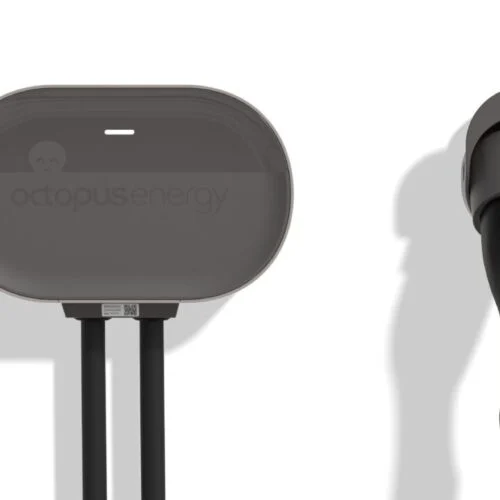As the energy transition accelerates, the Balancing Mechanism (BM) has emerged as a crucial tool for both the system operator, National Grid, and distributed energy resources alike.
Used to balance electricity system supply and demand in near real time, the BM has evolved as a new class of generator has emerged. This evolution reached another milestone earlier this year with the addition of a Distributed Resource Desk (DRD), a special-purpose desk designed specifically to cater for power resources of a more distributed nature.
Mike Ryan has the benefit of experiencing both sides of the BM, and is a staunch advocate of National Grid’s newest addition. Having spent more than nine years at National Grid, including more than a year as the firm’s operability strategy manager, Ryan switched sides in December last year to become Anesco’s asset management director, where his job is to optimise the returns for assets the firm manages.
Speaking from experience, Ryan says that distributed resources aren’t the type of customer National Grid “probably weren’t used to dealing with”. Having grown accustomed to balancing the output of a handful of large power stations over decades, the advent of distributed generation and battery storage has thrown tens, if not hundreds of thousands of cats among the pigeons. And to make matters worse, these distributed assets are, in some ways, a lot more demanding, Ryan says.
“If we really want to decarbonise the system and meet climate change targets, we need a huge increase in these smaller players. Solar, storage, wind, there needs to be a really diverse portfolio. It was clear that National Grid’s current systems weren’t going to be able to deal without moving forwards,” Ryan says.
The inherent nature of the system National Grid had come to manage meant that larger units founds it easier to partake in and dispatch within the Balancing Mechanism (BM), all the while control engineers found it easier to see what these units were doing.
Change was needed, both in the balancing system itself and within National Grid as an entity. Rather than a wholesale change of the BM – something which Ryan said could take years to deliver – the addition of the Distributed Resource Desk (DRD) was seen as a way to deliver “a lot of benefit, a lot sooner”.
“By establishing a new desk, taking away a lot of the burden that these smaller players had almost placed on the old balancing desks who were trying to manage all of these traditional units and the very different requirements of these distributed units. So by splitting them up and having separate desks, you’re treating both equally, but you’re also saying you’re on a desk that’s appropriate for the sort of asset you are,” he adds.
But far from being just a separate desk for asset operators to access, the addition is emblematic of a wider change within the system operator, one that Ryan says has been underplayed.
Those that operate the DRD are becoming more and more in tune with the quirks and traits of distributed resources by the day, and this knowledge is being shared with colleagues. “That’s really where the big change has been, that not only is there now a desk that’s focussed on these assets but there is a desk that’s building knowledge, insight and understanding about how these assets work,” Ryan says.
And that’s paying dividends for the sector.
The view from the operator
The desk’s success was apparent within its first 24 hours of operation. The number of bids and offers from distributed providers accepted by the ESO control room more than doubled to 87MWh and, with National Grid staff now manning the new desk, the ESO expects the BM market to grow by 179% to 145MW by April.
Not only that, but Ryan says that Anesco has seen its assets used slightly differently as they have done before. “That was interesting for us as it was something we hadn’t expected. They’re almost being used in shorter bursts in some ways,” he says.
According to Ryan, this is likely to do with the timing of the desk’s use and the added expertise that sits within National Grid. “By having a desk that’s able to look at these units individually, if they see that a unit would be economically beneficial for five minutes then it can be instructed, whereas the previous desk was trying to look for those things that were needed for five minutes and manage what large coal and gas plants were doing, and there was this complete mismatch when trying to balance.”
And it’s also having an impact on battery storage asset managers too, specifically with relation to business models, revenue stacks and how the two are optimised. “I think some people think you can develop a battery, win a 24 hour FFR contract and that’s it, you can forget about it. That’s no longer the case and you need to be much more active, much more dynamic when you’re optimising across revenue streams,” Ryan says.
The DRD stands to make BM revenues clearer, more secure and more consistent and while Ryan says it’s too early to say whether or not the desk has changed the game for asset operators, it’s evidence that the BM is “the right place to be”.
With ambitious goals in place there will be an expectation that the desk continues to increase its presence in the BM. Ryan says that it will now be National Grid’s imperative to embed that learning, and continue to liaise with asset owners and energy service providers alike. These companies will also need to be involved in further decision making, with much of the SO’s systems remaining somewhat outdated when it comes to distributed resources.
The early signs are encouraging, and Ryan’s convinced that with further learning, battery storage in the BM could be a in a “really positive place” in no time at all.





